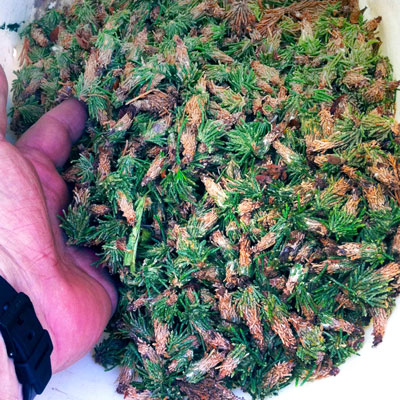Bagworms are Back

Bagworms have one life cycle per year. The larvae begin feeding in late May and early June in most parts of Texas (earlier some years than others).
They’re only 1/4-inch long when they get started, and that includes the lengths of the bags they pull along behind them as they move slowly along the twigs. It’s not uncommon to have hundreds of them on a single plant. In those quantities damage can be rapid and fatal.
By the times the larvae are fully developed three or four weeks later, the bags will be 3/4-inch long and the plants may be almost entirely stripped. That may be the point of no return if you have a large population of the bagworms. Conifers are slow to regenerate new needles, and one bad June of the larvae can kill mature junipers and cypress.
Once they quit feeding, bagworms tie their bags to the small twigs with a tenacious fiber and seal themselves up within what become their cocoons for the ensuing 10 months. Come mid-spring they emerge as moths, fly about, mate, lay eggs and begin the life cycle all over again.
Controls…
Bacillus thuringiensis (“B.t.”) is an effective organic remedy for all types of caterpillars, bagworms included. However, almost any general-purpose organic or inorganic insecticide will kill bagworms, but only if you apply it before they quit feeding actively. Read and follow label directions to be sure that bagworms are included, also to see if there are any specific instructions on how to use it.
For very small outbreaks, or if you discover them after they have secured themselves to their permanent roosts and are no longer vulnerable to sprays, you may choose to pull them off by hand. Put them into a plastic trash bag and send them off with the garbage.

